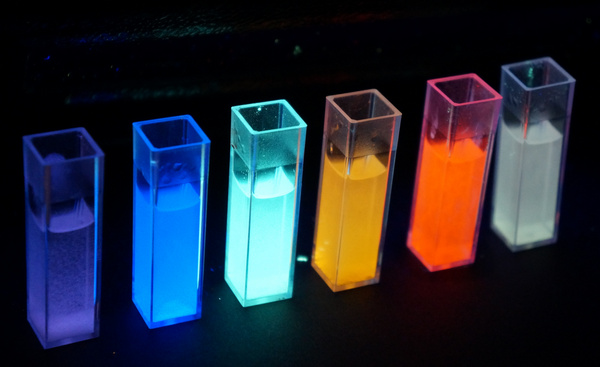"Systematic Approach in Designing Rare-Earth-Free Hybrid Semiconductor Phosphors for General Lighting Applications"
Journal of the American Chemical Society
The phase-out of traditional incandescent bulbs in the U.S. and elsewhere, as well as a growing interest in energy efficiency, has given LED lighting a sales boost. However, that trend could be short-lived as key materials known as rare earth elements become more expensive. Scientists have now designed new materials for making household LED bulbs without using these ingredients. They report their development in ACS’Journal of the American Chemical Society.
 |
|
A new way to make white and colorful LEDs is more Earth-friendly than existing methods. (Photo Credit: American Chemical Society) |
LED lighting, which can last years longer than conventional bulbs, is an energy-efficient alternative. Switching lighting to LEDs over the next two decades, reports the U.S. Department of Energy, “could save the country US $250 billion in energy costs over that period, reduce the electricity consumption for lighting by nearly one half, and avoid 1,800 million metric tons of carbon emission.” White LED bulbs are already on store shelves, but the light is generally “colder” than the warm glow of traditional bulbs. Plus, most of these lights are made with rare earth elements that are increasingly in-demand for use in almost all other high-tech devices, thus adding to the cost of the technology. Jing Li’s research team set out to solve the issues of material sources and pricing.
The researchers designed a family of materials that don’t include rare earths but instead are made out of copper iodide, which is an abundant compound. They tuned them to glow a warm white shade or various other colors using a low-cost solution process. “Combining these features, this material class shows significant promise for use in general lighting applications,” the scientists conclude.
The authors acknowledge funding from the National Science Foundation.





 CN
TW
EN
CN
TW
EN




